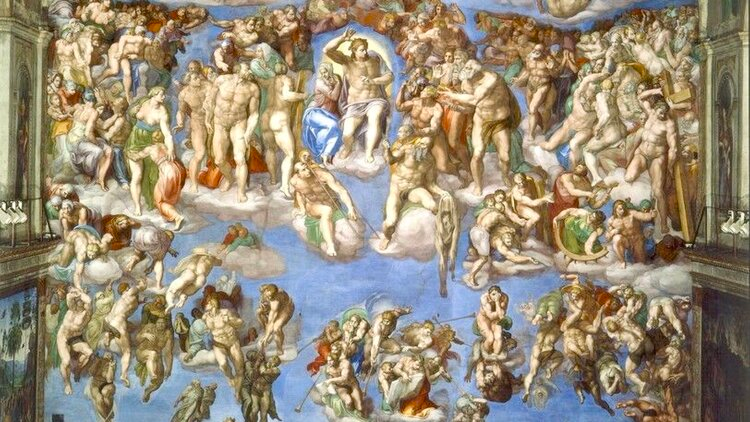Objections, Preterism, Revelation
PMW 2024-037 by Kenneth L. Gentry, Jr.
Preteristic postmillennialists hold that Revelation was written prior to the destruction of Jerusalem and the temple in AD 70. We argue this on historical and exegetical grounds. We do not argue for an early date for Revelation on purely theological grounds in order to defend our long-range hope against John’s enormous judgment scenes.. I have argued the case of the early date of Revelation in several places, most especially in my doctoral dissertation published as Before Jerusalem Fell. In this brief series of articles I will respond to four leading arguments against the early date.
The modern case for the late date of Revelation concentrates upon four basic arguments. These have been ably and succinctly summarized by noted evangelical scholar and late-date advocate Leon Morris in his commentary, The Revelation of St. John (2d. ed.: Grand Rapids: Eerdmans, 1987). I choose to investigate Morris’s approach for three basic reasons.
(1) He has rightfully earned an international reputation among both evangelical and liberal scholars. (2) He has a demonstrated competence in the field of New Testament studies, having even produced an excellent commentary on Revelation itself. (3) His presentation is succinct and focused, which lends itself to blog analysis. The order of my listing of these evidences will follow Morris’s, which is based on his scholarly estimation of their priority.
The Beast of Revelation
by Ken Gentry
A popularly written antidote to dispensational sensationalism and newspaper exegesis. Convincing biblical and historical evidence showing that the Beast was the Roman Emperor Nero Caesar, the first civil persecutor of the Church. The second half of the book shows Revelation’s date of writing, proving its composition as prior to the Fall of Jerusalem in A.D. 70. A thought-provoking treatment of a fascinating and confusing topic.
For more study materials, go to: KennethGentry.com
Morris begins with what he calls “the principal reason for dating the book during” Domitian’s reign, which is: Revelation “contains a number of indications that emperor-worship was practised, and this is thought to have become widespread in Domitian’s day” (p. 35).Earlier than Morris, James Moffatt insisted that the role of emperor worship in Revelation was virtually conclusive: “When the motive of the Apocalypse is thus found in the pressure upon the Christian conscience exerted by Domitian’s emphasis on the imperial cultus, especially as that was felt in Asia Minor, any earlier date for the book becomes almost impossible.” [1]
This argument regarding emperor worship is also held by Robert H. Mounce, R. H. Charles, H. B. Swete, Donald B. Guthrie, W. G. Kümmel, M. Eugene Boring, William Barclay, and many others. References in Revelation which seem to reflect emperor worship are found in scattered places. See especially Revelation 13:4, 8, 12, 15; 14:9, 11; 16:2; 19:20; 20:4. The most noteworthy statements re found in Revelation 13, where worship of the “beast” is compelled.
Unfortunately, for this view emperor worship dates back to Julius Caesar in the last century before Christ. And it is endorsed by Nero, the emperor who commissions Vespasian to put down the Jewish rebellion (which results in the destruction of the temple). The emperor cult had a prominent role in the political and social life of the Roman empire well before Domitian, and even before Nero.
Although it is true that historical development continued to introduce new features and requirements into the practice, nevertheless after 30 B.C. “we can observe a swift spread of the emperor cult throughout the Roman Near East.” [2] As even late-date advocate James Moffatt wrote: “The blasphemous title of dims, assumed by the emperors since Octavian (Augustus = sebastos) as a semi-sacred title, implied superhuman claims which shocked the pious feelings of Jews and Christians alike. So did theos [god] and theou huios [son of god] which, as the inscriptions prove, were freely applied to the emperors, from Augustus onwards.” [3]
Before Jerusalem Fell Lecture (DVD)
DVD by Ken Gentry
A summary of the evidence for Revelation’s early date. Helpful, succinct introduction to Revelation’s pre-AD 70 composition.
See more study materials at: www.KennethGentry.com
The appearance of emperor worship in Revelation is held by many late-date theorists as the strongest evidence for a date during the last year of the reign of Domitian (A.D. 81-96). It is true that Domitian required people to address him as “Lord and God.” Certainly the emperor cult was prominent in his reign. Yet when we scrutinize the relevant historical evidence we discover abundant testimony to emperor worship at various stages of development well before both Domitian and Nero. Indeed, such clear statements exist of so many aspects of the emperor cult, it is surprising that this argument is used at all against the early date. One wonders why it is deemed “the principal reason” (Morris) that makes it “almost impossible” (Moffatt) for the early date view to stand is wholly incredible.
Notes
- James Moffatt, The Revelation of St. John the Divine, vol. 5 in W. Robertson Nicoll, ed., The Expositor’s Greek Testament (Grand Rapids: Eerdmans, rep. 1980), 317.
- Doron Mendels, The Rise and Fall of Jewish Nationalism: Jewish and Christian Ethnicity in Ancient Palestine (Grand Rapids: Eerdmans, 1992), 278.
- Moffatt, Revelation, 429. See also: Aune, Revelation 1-5, lxviii; Leonard L. Thompson, The Book of Revelation: Apocalypse and Empire (New York: Oxford, 1990), 104-190.
 PMW 2024-041 by Kenneth L. Gentry, Jr.
PMW 2024-041 by Kenneth L. Gentry, Jr.
 PMW 2024-040 by Kenneth L. Gentry, Jr.
PMW 2024-040 by Kenneth L. Gentry, Jr. PMW 2024-039 by Kenneth L. Gentry, Jr.
PMW 2024-039 by Kenneth L. Gentry, Jr. PMW 2024-038 by Kenneth L. Gentry, Jr.
PMW 2024-038 by Kenneth L. Gentry, Jr.


 PMW 2024-036 by Kenneth L. Gentry, Jr.
PMW 2024-036 by Kenneth L. Gentry, Jr.

Recent comments